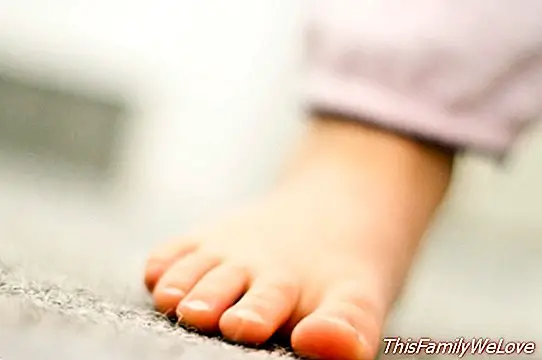How to make sure that the child misbehaves
The health of children is an issue that concerns all parents in many ways. Not only in regard to colds or other more visible problems such as stomach pain. There are many more reasons that can cause a child to have a hard time, such as problems in the foot.
How to know if the child has this kind of problems? Well, look at the way you step is a good indicator. Although it always has to be a professional to determine if there is any condition, at home parents can advance work if they stop to observe some details in the way of walking of the smallest of the house.
Care for the child's progress
Keep in mind that they are the podiatrists who finally determine if there is a problem in the foot, we must take into account a series of points when the child walks to know if he does it correctly:
- Position of the feet when walking. The angle of progression of the march must present the child when walking about 15º opening. If, when we see our son walking, we observe that the tips of the feet get inwards, we will say that he has an angle of progression of the diminished gait or gait in adduction. If, on the other hand, it is seen that the child is walking with his toes out, we would talk about an increased angle or gait in abduction.
- Type of foot and footprint. One of the most common causes for parents to consult their children is because they appreciate flat feet valgus, which are characterized by the decrease in the height of the internal plantar arch, which usually widen the foot and is accompanied by an internal fall of the position of the same. On the contrary, we would find extremities with an increased height of the internal plantar arch or foot that can be accompanied by a position of the foot turned inward (cavo-valgus) or outward (cavo-varus). In addition, controlling the disgust that occurs daily in the child's footwear can get a lot of information on how to walk and when walking.
- Tiptoe. Many times we will see our children walking "on tiptoe", this alteration of the tread may occur naturally during the early stages of the beginning of the child's walk, but sometimes extends from 5 to 10 years, these being the cases that we should value in consultation since they can be generated by different causes.

Possible foot anomalies
If you notice some of these problems in the way you step, you will have to go to the specialist. These are some of the problems that can be detected in the podiatrist: feet talovalgos, metatarsovaros and equinovaros or zambos feet.
- The talovalgo it manifests as an exaggerated laxity of the foot joint with the leg that allows hyperflexion (with the fingers it is possible to touch the anterior part of the leg) and a lateralization of the heel outward, in valgus. It does not need treatment but there is the possibility that it will develop flatfoot later.
- The metatarsus varus (Placement of the anterior part of the foot inwards) are corrected with manual maneuvers, although in rebellious cases corrective splints must be used.
- The equinovar feet (zambos feet) require early treatment.
- Fingers of more or less. A malformation that, due to the possibility of causing problems with the footwear, should be solved before our baby begins to walk, is polydactyly (presence of one extra finger). Syndactyly (joined fingers) only causes a problem of aesthetics.
Damián Montero




